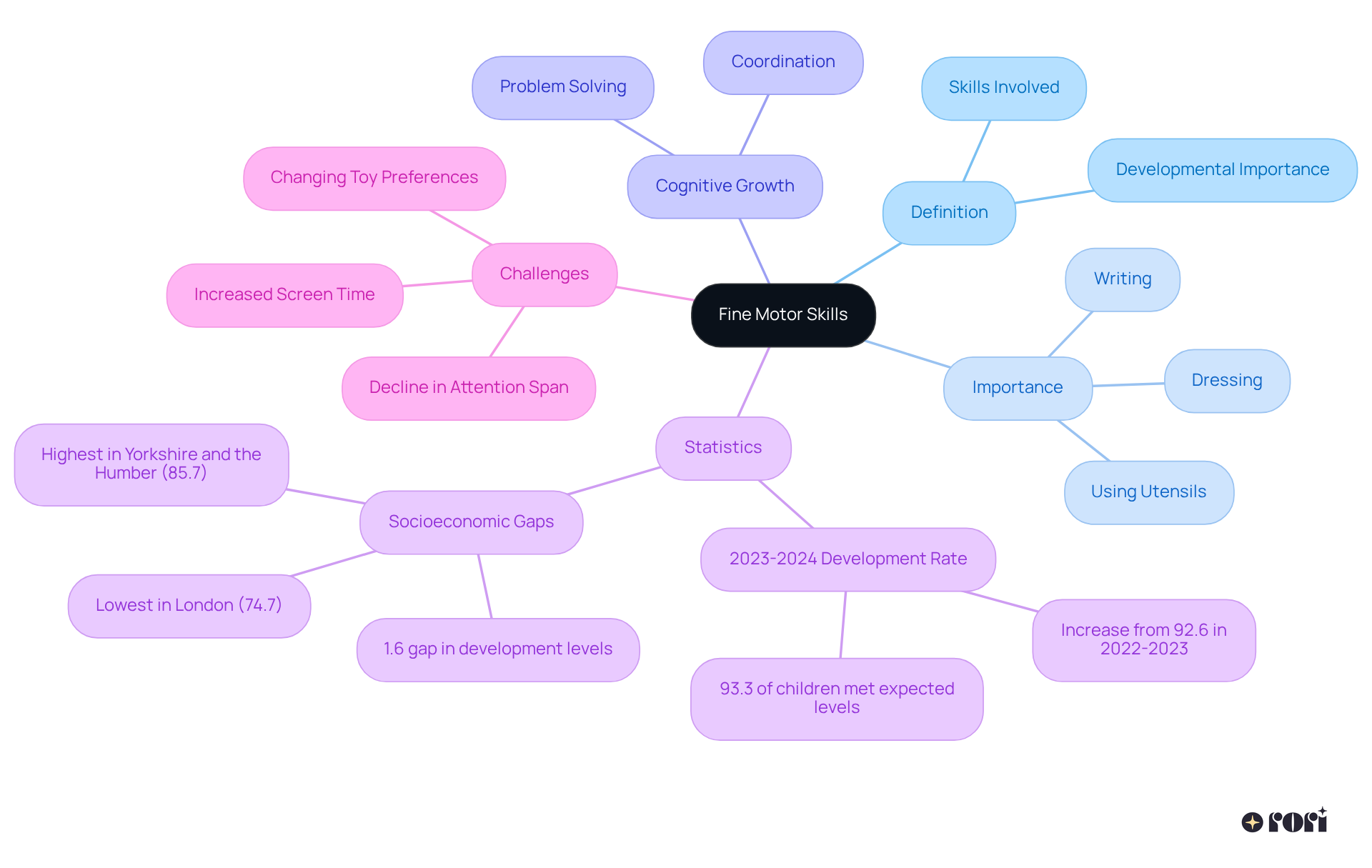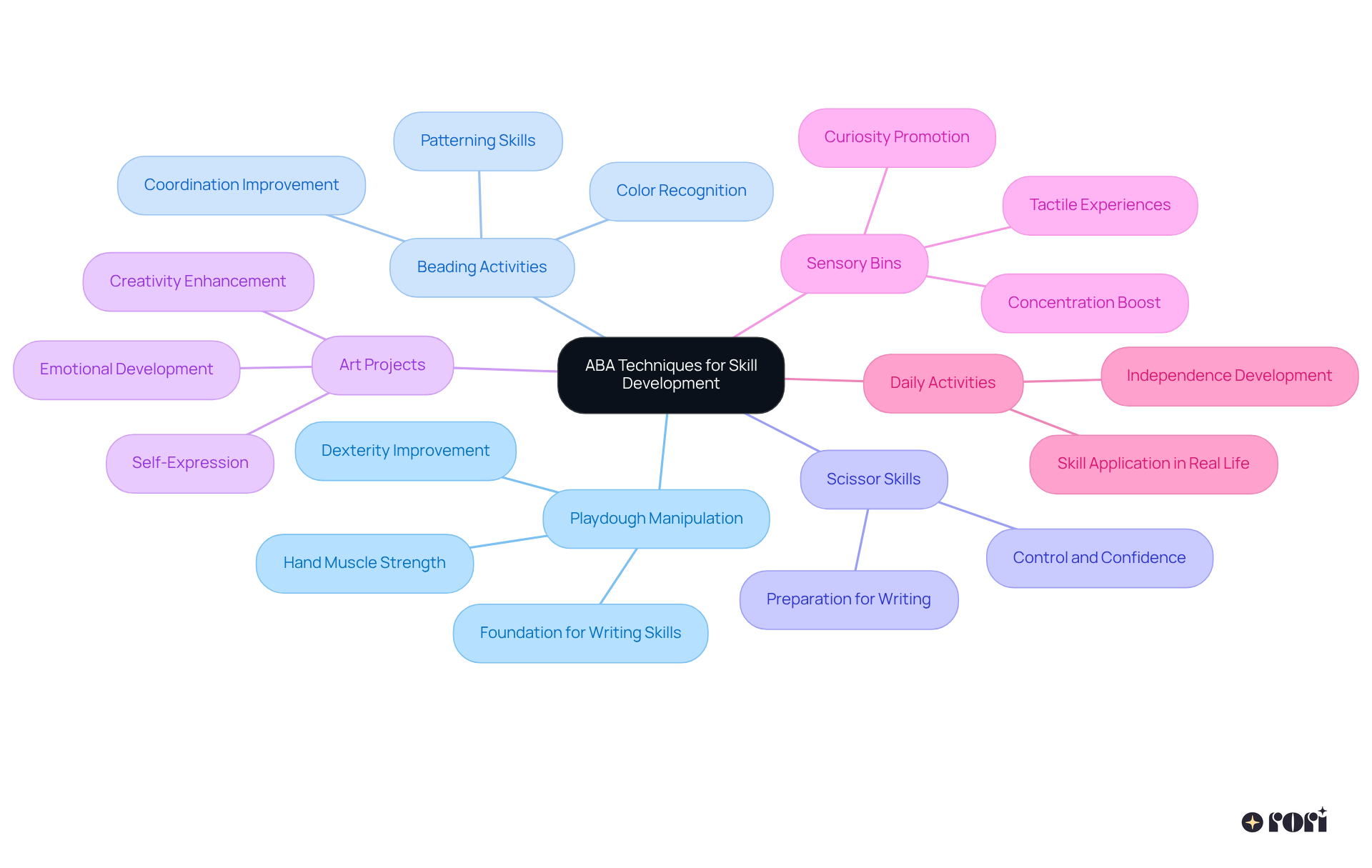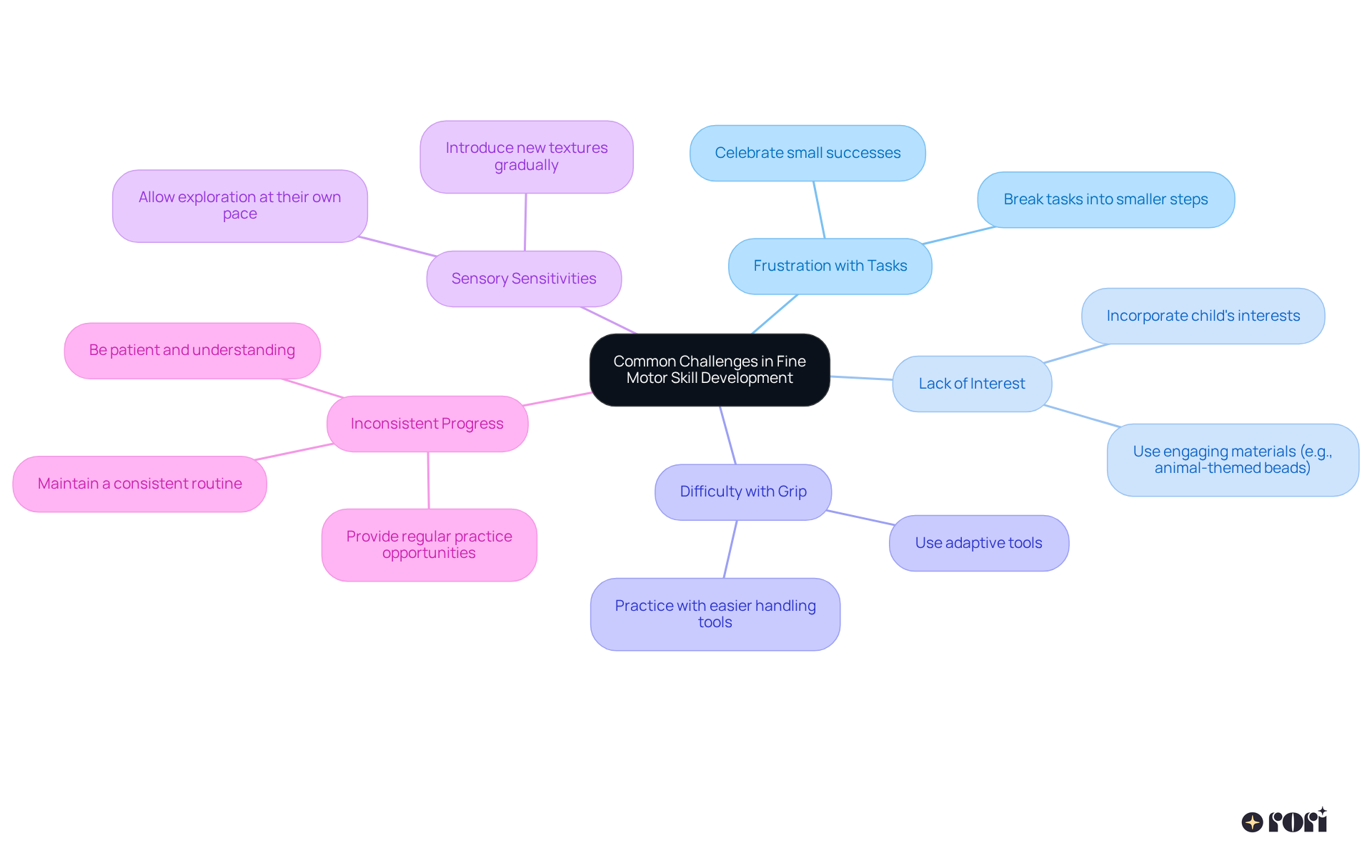This article highlights how Applied Behavior Analysis (ABA) techniques can really make a difference in enhancing fine motor skills for children, especially those on the autism spectrum. By engaging in structured activities at home, kids can develop these important skills while having fun!
Fine motor skills are crucial for daily tasks and cognitive growth. Think about the joy of watching your child master tasks like manipulating playdough or threading beads. These activities not only help in skill development but also boost their confidence and independence.
Let’s explore this together! By incorporating simple, enjoyable activities into your routine, you can support your child’s growth and create a positive learning environment at home. We’re here to help you every step of the way!
Understanding the intricate dance of small movements performed by children can truly unlock a world of independence and confidence. Fine motor skills—the precise abilities that enable tasks like writing and buttoning clothes—are crucial for everyday life, especially for children on the autism spectrum. As parents and caregivers, you might be wondering how to nurture these skills at home effectively. That's where Applied Behavior Analysis (ABA) techniques come in as powerful allies!
However, navigating the challenges that often accompany fine motor skill development can feel overwhelming. How can we ensure our little ones thrive in this essential area? Let’s explore this together! By sharing relatable experiences and supportive information, we can build a sense of community and help each other along the way.
Let’s talk about something really important: precise physical abilities. These are the skills that help kids use the small muscles in their hands, fingers, and wrists. Think about how essential these skills are for everyday activities like writing, buttoning up clothes, or using utensils. For young ones, especially those on the autism spectrum, developing fine motor skills ABA is crucial. It not only helps them tackle daily tasks but also boosts their independence and self-esteem.
When kids get good at these skills, it also supports their cognitive growth. Many of those delicate tasks require problem-solving and coordination, which are key for their overall development. Engaging in activities that improve dexterity can make a big difference in how well they navigate their world. Did you know that recent research found that 93.3% of youngsters met the expected level of development in fine motor skills during 2023-2024? That’s a slight increase from 92.6% in the previous year! However, there are still gaps, particularly among different socioeconomic groups. This really shows how important it is to have targeted initiatives to help kids build fine motor skills ABA, which are essential for their autonomy and confidence.
On another note, we’ve seen that increased screen time might be affecting kids' attention spans and concentration—both of which are vital for the development of fine motor skills ABA. As Hornbeck points out, focusing and following instructions are key for tasks like zipping a coat or tying shoelaces. Addressing these modern challenges is essential for nurturing dexterity in our children. We’re here to help you every step of the way! Let’s explore this together!

Applied Behavior Analysis (ABA) therapy is a fantastic, data-driven approach that helps enhance specific skills through organized techniques. When discussing fine motor skills aba, ABA therapy employs methods such as:
These methods simplify tasks into manageable steps. For instance, think about shaping playdough, threading beads, or using scissors—these activities can be introduced gradually, allowing kids to practice and improve their skills.
Positive reinforcement plays a crucial role here, encouraging young ones to dive into these activities and fostering a sense of achievement. By focusing on fine motor skills aba through a variety of fun exercises and tasks, ABA therapy helps children develop the essential skills needed to tackle daily activities independently, thereby boosting their confidence and independence. Let’s explore this together and see how we can help your child thrive!

To effectively apply ABA techniques at home, parents can include a variety of engaging activities that enhance fine motor skills ABA development. Let's dive into some practical strategies that can make a difference:
Playdough Manipulation: Encourage your child to roll, pinch, and flatten playdough. This fun activity not only strengthens hand muscles but also boosts dexterity, laying a solid foundation for future writing skills. Engaging in such activities is vital, as these dexterous abilities play a crucial role in everyday tasks like dressing and eating.
Beading Activities: Stringing beads onto a string is a great way to enhance coordination and precision. Start with larger beads and gradually move to smaller ones as your child's skills improve. This not only reinforces color recognition and patterning but also highlights the importance of play in developing physical and cognitive abilities.
Scissor Skills: Provide child-safe scissors and practice cutting along lines or shapes. This helps your little one develop control and confidence in using cutting tools, which is essential for tasks like writing. Activities like these have shown to significantly boost physical abilities in children aged 4.5-6 years.
Art Projects: Engage in coloring, painting, or crafting activities together. These not only improve hand skills but also encourage creativity and self-expression, aiding emotional development. Remember, early childhood is a crucial time for enhancing physical skills through imaginative play!
Sensory Bins: Create a sensory bin filled with rice, beans, or sand. Encourage your child to explore and handle the items in the bin, fostering tactile experiences while boosting concentration and curiosity. Sensory play is essential for enhancing coordination and dexterity, promoting exploration and involvement.
Daily Activities: Involve your little one in routine chores that require precise hand movements, like organizing laundry, setting the table, or making simple meals. This not only develops their skills but also fosters independence and confidence. Studies show that children who engage in active play are more likely to enhance their physical abilities compared to those who participate in passive play.
By incorporating these practical techniques for fine motor skills ABA into daily routines, parents can play a pivotal role in their children’s growth and independence. Let’s explore this together and make learning fun!

While working on fine motor skills aba, parents often encounter a few challenges. Let’s explore some common issues and troubleshooting tips together:
We’re here to help you every step of the way! If you have any thoughts or experiences to share, feel free to comment below!

Enhancing fine motor skills through Applied Behavior Analysis (ABA) techniques at home is such an important step in supporting your child's independence and confidence! This article has explored the significance of fine motor skills, especially for children on the autism spectrum, highlighting their role in daily activities and overall cognitive development. By utilizing structured ABA methods, you can create an environment that fosters skill growth, helping your child become better equipped to handle everyday tasks.
Key strategies we’ve highlighted include engaging activities like:
All designed to promote dexterity and control. Plus, addressing common challenges—like frustration or lack of interest—through tailored approaches can really enhance the effectiveness of these techniques. The data presented reinforces the importance of targeted initiatives, showing how consistent practice can lead to meaningful improvements in your child's fine motor abilities.
Ultimately, developing fine motor skills is not just about enhancing physical capabilities; it's about nurturing your child's confidence and independence. By implementing the discussed ABA techniques and remaining patient through the learning process, you can play a crucial role in your child's growth. So, let’s embrace these strategies together and engage your child in fun, hands-on activities that will pave the way for their success in everyday life!
What are fine motor skills?
Fine motor skills are precise physical abilities that involve the use of small muscles in the hands, fingers, and wrists, essential for everyday activities like writing, buttoning clothes, and using utensils.
Why are fine motor skills important for children?
Fine motor skills are crucial for children as they help them perform daily tasks, boost their independence and self-esteem, and support cognitive growth through problem-solving and coordination.
How do fine motor skills impact children on the autism spectrum?
For children on the autism spectrum, developing fine motor skills is particularly important as it aids in tackling daily tasks and enhances their autonomy and confidence.
What recent statistics are available regarding fine motor skill development in children?
Recent research indicates that 93.3% of youngsters met the expected level of development in fine motor skills during 2023-2024, showing a slight increase from 92.6% in the previous year.
Are there disparities in fine motor skill development among different socioeconomic groups?
Yes, there are still gaps in fine motor skill development among different socioeconomic groups, highlighting the need for targeted initiatives to help all children build these essential skills.
How does increased screen time affect fine motor skills?
Increased screen time may negatively impact children's attention spans and concentration, which are vital for developing fine motor skills, as focusing and following instructions are key for tasks like zipping coats or tying shoelaces.
What can be done to nurture fine motor skills in children?
Addressing modern challenges such as screen time and providing targeted activities can help nurture dexterity and improve fine motor skills in children.